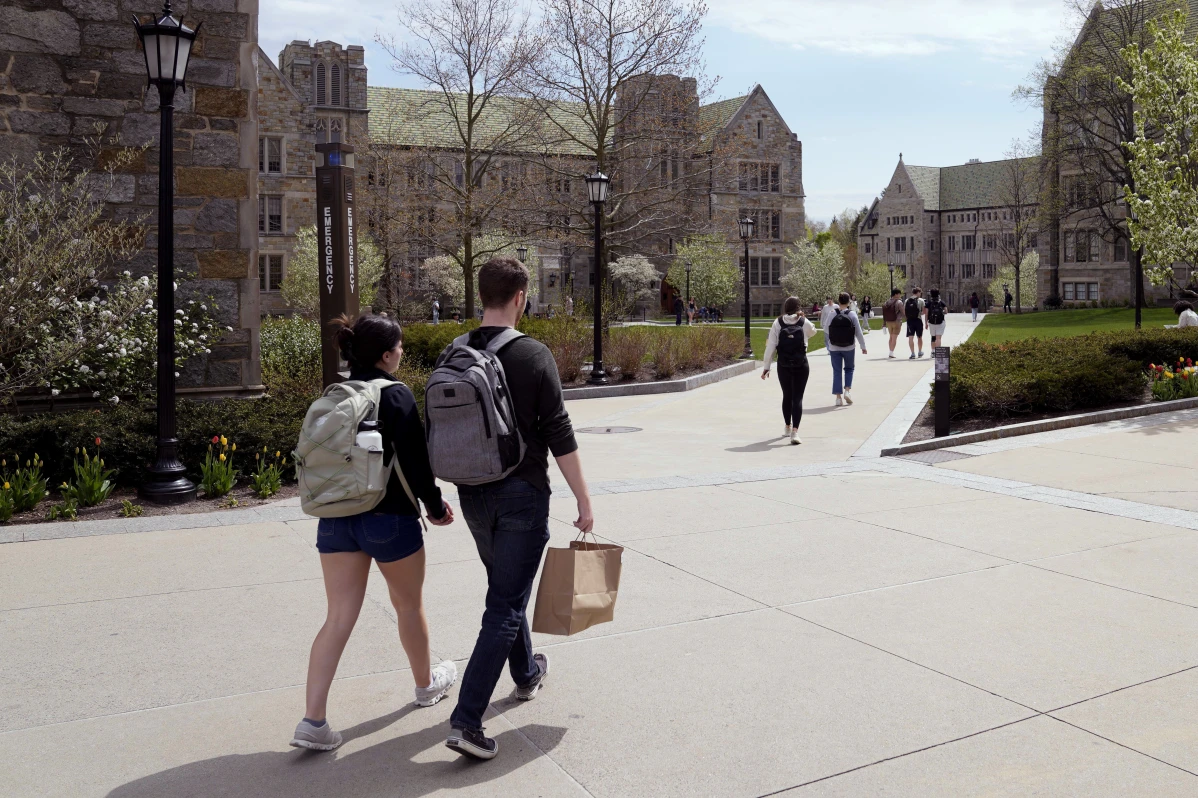
Keep up with the latest news and be part of our weekly giveaways and airtime sharing; follow our WhatsApp channel for more updates. Click to Follow us
The notion that college costs are perpetually rising is being challenged by new research, which reveals that students attending public universities are paying significantly less than they were a decade ago. Furthermore, tuition increases at private colleges have slowed substantially after years of substantial hikes.
According to data compiled by the nonprofit College Board, the average student attending an in-state public university this year faces a tuition bill of $11,610, representing a 4% decrease from a decade earlier when adjusted for inflation. However, the most notable savings are evident in the actual amount students pay after receiving grants and financial aid, which has plummeted by 40% over the decade, from $4,140 to $2,480 annually.
This decrease in cost has resulted in reduced borrowing. Currently, fewer than half of students attending in-state public universities graduate with debt, down from 59% a decade earlier, according to the College Board. Moreover, among those who do borrow, the average loan balance has decreased by 17% to $27,100.
Meanwhile, at private colleges, tuition continues to rise, albeit at a much slower rate. Over the past decade, tuition has increased by 4% when adjusted for inflation, reaching an average of $43,350, according to the College Board. This represents a significant shift from the preceding two decades, during which tuition skyrocketed by 68%.
The decline in costs can be attributed, in part, to the COVID-19 pandemic, which prompted institutions to freeze tuition and led to increased higher education funding from states and the federal government. However, some of this funding has since expired.
As Americans increasingly question the value of a college degree, research indicates that, over time, a degree still yields significant financial benefits. According to data from Georgetown University’s Center on Education and the Workforce, Americans with a bachelor’s degree earn a median of $2.8 million during their careers, representing a 75% increase over those with only a high school diploma.
The pandemic has played a crucial role in reducing costs, said Jennifer Ma, an executive research scientist at the College Board and lead author of the study. “We know that during COVID, many institutions—public and private—froze tuition,” Ma explained. As states and the federal government responded to the pandemic, Ma noted, they increased higher education funding, enabling colleges to reduce attendance costs.
Some institutions have made concerted efforts to limit cost increases. For instance, Purdue University in Indiana has maintained its annual in-state tuition at $9,992 for the past 13 years. Mark Becker, president of the Association of Public and Land-grant Universities, welcomed the new data, citing institutional efforts to control costs, combined with increased state and federal investments in public universities.
While costs have decreased for students attending public universities, those attending out-of-state public universities or private colleges still face substantial expenses, reaching as high as $95,000 annually in some cases. However, many institutions offer significant discounts to middle- and lower-income students, and some private colleges have expanded their financial aid packages.
Kai Mattinson, a 22-year-old senior at Northern Arizona University, exemplifies the impact of these discounts. Originally intending to attend the University of Arizona, Mattinson opted for Northern Arizona University due to its lower tuition costs. With discounts and scholarships, Mattinson’s annual tuition is between $15,000 and $20,000, significantly lower than the initial estimate of $39,000.
The Massachusetts Institute of Technology recently announced a significant expansion of its financial aid program, eliminating tuition costs for undergraduates with family incomes below $200,000. Other private colleges have also implemented similar measures, discounting tuition as a strategic move to attract students in an increasingly competitive environment.
As institutions navigate the challenges of rising operational costs and dwindling enrollment, many have been forced to cut programs to maintain financial sustainability. The temporary relief provided by federal funding during the pandemic has expired, leaving colleges to explore alternative solutions to control costs and maintain affordability
Please don’t forget to “Allow the notification” so you will be the first to get our gist when we publish it.
Drop your comment in the section below, and don’t forget to share the post.





